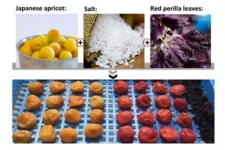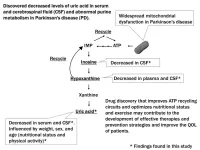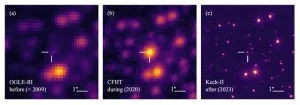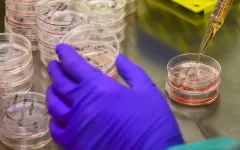An edible toothpaste-based transistor
The invention has been developed at the Istituto Italiano di Tecnologia in Milan and published in the scientific journal Advanced Science.
2024-09-26
(Press-News.org)
Milan (Italy), 26 September 2024 - A toothpaste-based transistor is the latest innovation from the research team at the Istituto Italiano di Tecnologia (IIT-Italian Institute of Technology) in Milan, which pushes the boundaries of edible electronics. This innovative nano-device is expected to become a key component of future smart pills, designed to monitor health conditions from within the body and then safely dissolve after completing their function. The research findings have been published in the journal Advanced Science.
Several commercial toothpaste formulations contain crystals of copper phthalocyanine, a blue pigment that acts as a whitening agent. This substance is deposited on the teeth, functioning as an optical filter to enhance their whiteness. Throughout the day, copper phthalocyanine is gradually removed by saliva and ingested. The research team at IIT's Center for Nano Science and Technology (CNST) in Milan (Italy) investigated the properties of this substance in collaboration with a dental researcher from the University of Novi Sad in Serbia. Through laboratory simulations and analysis of existing clinical data, they determined that, on average, we inadvertently ingest about 1 milligram of copper phthalocyanine each time we brush our teeth.
"With the amount of copper phthalocyanine we ingest daily, we could theoretically manufacture approximately 10,000 edible transistors," says Elena Feltri, the paper’s lead author and a doctoral student at IIT's CNST in Milan.
Actually, an intriguing aspect of this pigment is its chemical structure, which facilitates charge conduction within its crystals, making copper phthalocyanine an excellent candidate for use as a semiconductor in organic electronics applications.
The research team integrated small amounts of this new ingredient as a semiconductor into an already tested recipe for building edible circuits. The circuits are constructed on an ethylcellulose substrate, with electrical contacts printed using inkjet technology and a solution of gold particles, which are commonly used in culinary decoration. A “gate” made from an electrolytic gel based on chitosan - a food-grade gelling agent derived from crustaceans like blue crabs - enables the transistor to operate at a low voltage of less than 1V.
This edible transistor was developed in the Printed and Molecular Electronics laboratory led by Mario Caironi and follows the invention of an edible battery by the same group last year. Caironi’s lab is dedicated to exploring the electronic properties of food and its derivatives, aiming to develop edible electronic devices for future applications in healthcare and quality control within the food industry. In 2019, Caironi received a €2 million grant from the European Research Council for the ELFO project, to explore the field of food electronics. Moreover, since 2021, his team has been involved in the European RoboFood project, which aims to develop edible robots.
The research group's next step will be to identify other edible substances, with suitable chemical and physical properties to create an intelligent, edible electronic device to use for healthcare applications, such as monitoring body parameters within the gastrointestinal tract.
END
[Attachments] See images for this press release:
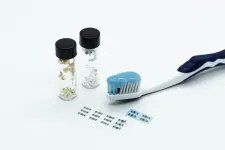

ELSE PRESS RELEASES FROM THIS DATE:
2024-09-26
The diverse biochemical composition of Japanese apricot fruits explains their broad spectrum of action on the human body. The high levels of key phenolic compounds and hydroxycinnamic acids contribute to various health benefits including anti-inflammatory, antioxidant, and antimicrobial properties.
A recent study published in Food Research International on July 19, 2024, led by Prof. Yukiharu Ogawa and Jutalak Suwannachot from Chiba University, quantitatively evaluated the changes in phenolic compounds and antioxidant activity during the production of Shiso-zuke Umeboshi (PP). The study also simulated the digestive process to characterize the release of these compounds and ...
2024-09-26
Parkinson’s disease (PD), the second most common neurodegenerative disorder globally, has long baffled scientists with its progressive nature and debilitating effects on motor function.
A recent study from the School of Medicine at Fujita Health University has brought new insights into the metabolic disruptions experienced by patients with PD. By analyzing the blood and cerebrospinal fluid (CSF) of the patients, researchers have discovered critical impairments in purine metabolism and the recycling of adenosine triphosphate (ATP)—the molecule responsible for energy production in cells.
For years, scientists have noted the decreased levels ...
2024-09-26
Busy with work and other obligations, some people concentrate their moderate-to-vigorous exercise in one or two days of the week or weekend. A study led by investigators at Massachusetts General Hospital, a founding member of the Mass General Brigham healthcare system, has found that this “weekend warrior” pattern of exercise is associated with lower risk of developing 264 future diseases and was just as effective at decreasing risk as more evenly distributed exercise activity. Results are published in Circulation.
“Physical activity is known to affect risk of many diseases,” said ...
2024-09-26
Vaccination coverage for COVID-19 is high in both people with and without mental illness, according to a large multinational study led by researchers at Karolinska Institutet and published in Nature Communications. However, Swedish registry data revealed that individuals with unmedicated mental illness have lower vaccination levels.
The researchers analysed data from seven studies in five countries (Sweden, Norway, Iceland, Estonia, and Scotland) as part of the COVIDMENT consortium, totalling just over 325,000 individuals, and registry data from Sweden including over ...
2024-09-26
The discovery of an Earth-like planet 4,000 light years away in the Milky Way galaxy provides a preview of one possible fate for our planet billions of years in the future, when the sun has turned into a white dwarf, and a blasted and frozen Earth has migrated beyond the orbit of Mars.
This distant planetary system, identified by University of California, Berkeley, astronomers after observations with the Keck 10-meter telescope in Hawaii, looks very similar to expectations for the sun-Earth system: it consists of a white dwarf about half the mass of the sun and an Earth-size companion in an orbit twice as large as Earth’s today.
That is likely to be Earth’s fate. ...
2024-09-26
Rockville, MD ̶ ̶ When a woman becomes pregnant, her iron requirements increase almost tenfold to support fetal development as well as her own increased iron needs. Her ability to meet these increased iron needs depends on her iron stores at the beginning of the pregnancy as well as the physiological adaptations that enhance iron absorption as pregnancy progresses. These physiological adaptations, however, are not always enough to support a pregnant woman’s iron needs, especially ...
2024-09-26
Four out of five pregnant women in Ireland are iron deficient by their third trimester, a University College Cork (UCC) study reveals. Researchers at the Irish Centre for Maternal and Child Health (INFANT) and School of Food and Nutritional Sciences in UCC have shown that over 80% of women are iron deficient by their third trimester.
The findings raise concerns as the participants in the study were a low-risk and generally healthy cohort. Iron deficiency during pregnancy is linked to increased risks of complications for both mother and child, including neurodevelopmental challenges for the baby.
This study is the largest of its kind globally and was ...
2024-09-26
Research at UMC Utrecht has identified 29 novel antibodies against the bacterium Klebsiella pneumoniae, an important cause of drug-resistant infections. Using genetic and functional approaches, the researchers also managed to unravel how these antibodies interact with antigens on the bacterial surface. Finally, they found that some of these novel antibodies act synergistically to neutralize this pathogen.
The increasing problem of antimicrobial resistance (AMR) urgently calls for the development of alternative ...
2024-09-26
WASHINGTON, D.C. — Sept. 26, 2024 — Most Americans agree their community is in need of more affordable housing, healthcare and social supports and services to help residents remain living independently as they age, according to a new survey from West Health and Gallup. Sixty-five percent of Americans perceive a need for more affordable housing and 60% say there is a need for more affordable healthcare and social supports and services.
The new West Health-Gallup research comes as the ...
2024-09-26
Off the coast of Chile, in waters filled with krill and anchovy by the Humboldt Current system, live an elusive and little-known population of orcas. Thanks to citizen science and years of dedicated surveillance, a team of scientists led by Dr Ana García Cegarra of the Universidad de Antofagasta are unveiling their secrets — starting with dinner.
García Cegarra’s team, who previously observed these orcas using fishing boats to help them capture sea lions, have now spotted them successfully hunting dusky dolphins for the first time and sharing the food among the pod. This new evidence about their eating habits may help experts understand how populations ...
LAST 30 PRESS RELEASES:
[Press-News.org] An edible toothpaste-based transistor
The invention has been developed at the Istituto Italiano di Tecnologia in Milan and published in the scientific journal Advanced Science.


